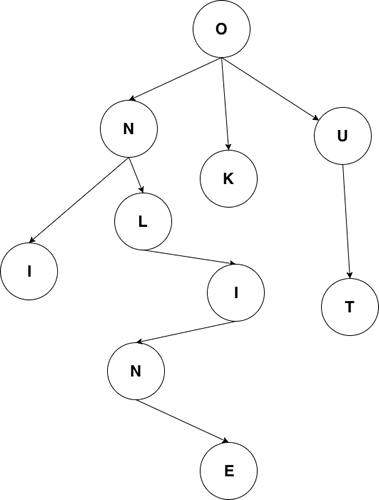Go语言router请求路由
在常见的 Web 框架中,router 是必备的组件。Go语言圈子里 router 也时常被称为 http 的 multiplexer。通过前面几节的学习,我们已经知道了如何用 http 标准库中内置的 mux 来完成简单的路由功能了。如果开发 Web 系统对路径中带参数没什么兴趣的话,用 http 标准库中的 mux 就可以。
RESTful 是几年前刮起的 API 设计风潮,在 RESTful 中除了 GET 和 POST 之外,还使用了 HTTP 协议定义的几种其它的标准化语义。具体包括:
const (
MethodGet = "GET"
MethodHead = "HEAD"
MethodPost = "POST"
MethodPut = "PUT"
MethodPatch = "PATCH" // RFC 5789
MethodDelete = "DELETE"
MethodConnect = "CONNECT"
MethodOptions = "OPTIONS"
MethodTrace = "TRACE"
)
来看看 RESTful 中常见的请求路径:
GET /repos/:owner/:repo/comments/:id/reactions
POST /projects/:project_id/columns
PUT /user/starred/:owner/:repo
DELETE /user/starred/:owner/:repo
相信聪明的你已经猜出来了,这是 Github 官方文档中挑出来的几个 API 设计。RESTful 风格的 API 重度依赖请求路径。会将很多参数放在请求 URL 中。除此之外还会使用很多并不那么常见的 HTTP 状态码,不过本节只讨论路由,所以先略过不谈。
如果我们的系统也想要这样的 URL 设计,使用标准库的 mux 显然就力不从心了。
httprouter
较流行的开源 go Web 框架大多使用 httprouter,或是基于 httprouter 的变种对路由进行支持。前面提到的 github 的参数式路由在 httprouter 中都是可以支持的。
因为 httprouter 中使用的是显式匹配,所以在设计路由的时候需要规避一些会导致路由冲突的情况,例如:
conflict:
GET /user/info/:name
GET /user/:id
no conflict:
GET /user/info/:name
POST /user/:id
简单来讲的话,如果两个路由拥有一致的 http 方法(指 GET/POST/PUT/DELETE)和请求路径前缀,且在某个位置出现了 A 路由是 wildcard(指 :id 这种形式)参数,B 路由则是普通字符串,那么就会发生路由冲突。路由冲突会在初始化阶段直接 panic:
panic: wildcard route ':id' conflicts with existing children in
path '/user/:id'
goroutine 1 [running]:
github.com/cch123/httprouter.(*node).insertChild(0xc4200801e0, 0xc42004fc01, 0x126b177, 0x3, 0x126b171, 0x9, 0x127b668)
/Users/caochunhui/go_work/src/github.com/cch123/httprouter/tree.go:256 +0x841
github.com/cch123/httprouter.(*node).addRoute(0xc4200801e0, 0x126b171, 0x9, 0x127b668)
/Users/caochunhui/go_work/src/github.com/cch123/httprouter/tree.go:221 +0x22a
github.com/cch123/httprouter.(*Router).Handle(0xc42004ff38, 0x126a39b, 0x3, 0x126b171, 0x9, 0x127b668)
/Users/caochunhui/go_work/src/github.com/cch123/httprouter/router.go:262 +0xc3
github.com/cch123/httprouter.(*Router).GET(0xc42004ff38, 0x126b171, 0x9, 0x127b668)
/Users/caochunhui/go_work/src/github.com/cch123/httprouter/router.go:193 +0x5e
main.main()
/Users/caochunhui/test/go_web/httprouter_learn2.go:18 +0xaf
exit status 2
还有一点需要注意,因为 httprouter 考虑到字典树的深度,在初始化时会对参数的数量进行限制,所以在路由中的参数数目不能超过 255,否则会导致 httprouter 无法识别后续的参数。不过这一点上也不用考虑太多,毕竟 URL 是人设计且给人来看的,相信没有长得夸张的 URL 能在一条路径中带有 200 个以上的参数。
除支持路径中的 wildcard 参数之外,httprouter 还可以支持 * 号来进行通配,不过 * 号开头的参数只能放在路由的结尾,例如下面这样:
Pattern: /src/*filepath
/src/ filepath = ""
/src/somefile.go filepath = "somefile.go"
/src/subdir/somefile.go filepath = "subdir/somefile.go"
这种设计在 RESTful 中可能不太常见,主要是为了能够使用 httprouter 来做简单的 HTTP 静态文件服务器。
除了正常情况下的路由支持,httprouter 也支持对一些特殊情况下的回调函数进行定制,例如 404 的时候:
r := httprouter.New()
r.NotFound = http.HandlerFunc(func(w http.ResponseWriter, r *http.Request) {
w.Write([]byte("oh no, not found"))
})
或者内部 panic 的时候:
r.PanicHandler = func(w http.ResponseWriter, r *http.Request, c interface{}) {
log.Printf("Recovering from panic, Reason: %#v", c.(error))
w.WriteHeader(http.StatusInternalServerError)
w.Write([]byte(c.(error).Error()))
}
目前开源界最为流行的 Web 框架 gin 使用的就是 httprouter 的变种。
原理
httprouter 和众多衍生 router 使用的数据结构被称为压缩字典树(Radix Tree)。大家可能没有接触过压缩字典树,但对字典树(Trie Tree)应该有所耳闻。下图是一个典型的字典树结构:




发表评论